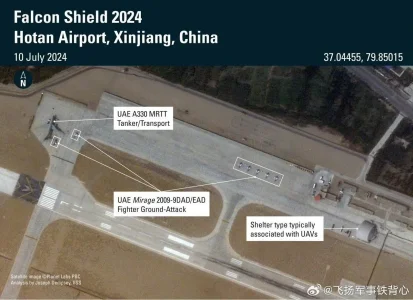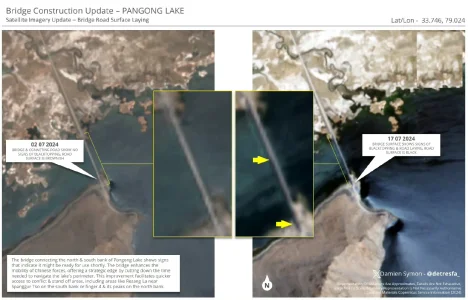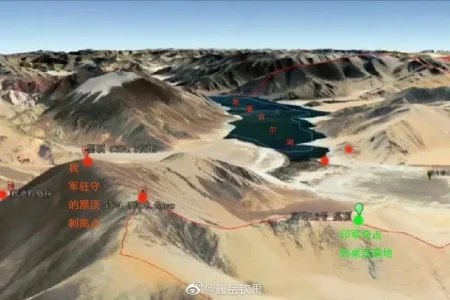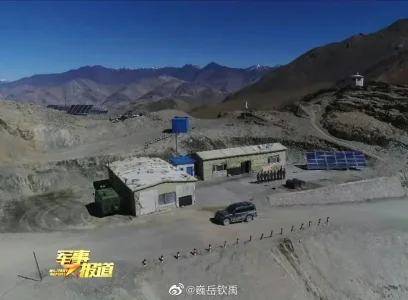India's Long Confrontation with Two Neighbours
India did not seek enmity with its two significant neighbors, Pakistan and China. However, historical events and geopolitical strategies have shaped its current adversarial relationships.
Pakistan
The British played a significant role in fostering enmity to India’s west by merging territory taken from Afghans with Punjab's heartland, a region crucial for British military recruitment. This area was named Pakistan, forming a hostile nation with a different religious philosophy but cultural similarities to India. The peaceful Kashmir region was given a choice to join either India or Pakistan. However, before a decision could be made, Pakistan invaded Kashmir, planting the seeds of future discord.
British-instilled fears of the Soviet Union reaching the Indian Ocean through Pakistan led the Americans to arm Pakistan, providing military aid in three phases: 1954-1959, 1981-1989, and 2001-2010. Each phase's aid, valued over $20 billion today, enabled Pakistan to pose a significant threat to India.
India fought three major wars against Pakistan in 1965, 1971, and 1999, resulting in significant losses for Pakistan despite substantial American military aid. India's less-equipped army triumphed through superior tactics and determination. However, the conflict and Pakistan’s obsession with Hindu India persist. Unable to sustain a direct war effort, Pakistan now resorts to terrorism.
China
While India was engaged with Pakistan, Mao Tse Tung seized Indian territory in the Himalayas in 1954. Initially unclear, the motive soon became evident as China built roads connecting the westernmost Muslim province of Xinjiang with China, passing through Indian territory. This prompted Chinese occupation and claims.
China also took issue with India granting political refuge to the Dalai Lama, leading to the 1962 invasion of an unprepared India. The Chinese bypassed the scantily armed Indian garrison in the Himalayas, delivering a significant setback to India. Although they later withdrew, the dispute continues with occasional skirmishes.
Current Scenario
By 2024, India has made significant economic progress and equipped itself militarily well. Pakistan, unable to fight directly, has resorted to terrorism, while China intimidates with threats of large-scale military invasion. India has responded well by positioning its well-armed forces strategically, capable of striking at Pakistan's heart and disrupting Chinese supply lines in Xinjiang and Tibet. These steps are sufficient to dissuade both adversaries.
Pakistan, now bankrupt, struggles to sustain any war effort. China, confronting multiple adversaries like Japan, USA, Taiwan, Philippines, and Vietnam, finds it challenging to commit a large army to the Himalayas. India, equipped with state-of-the-art weapons, stands firm against its adversaries. However, recognizing the need for allies, India seeks strategic partnerships to bolster its defense capabilities against these combined threats. No reliable strategic partner for India with similar strategic goals has emerged.
Indian Ocean
Since the military position in the North and West is at a standstill, the Chinese have shifted their focus to the Indian Ocean, building supply bases in the region and deploying research vessels to monitor the Indian Navy.
India has responded by establishing naval bases at the mouth of the Straits of Malacca and in the Arabian Sea. The Indian Navy is well-prepared with modern destroyers, battleships, aircraft carriers, P8i planes, submarines, and a nuclear strike force. While the Chinese are attempting to intimidate, they are not prepared for action 4,000 km away from their home bases. Hence, it is a standstill in the Indian Ocean as well.
Summary
India's long-term security with two enemies on its border is not fully assured. The only way forward is for India to continue rapid economic progress, resulting in higher defense buildup. This will be sufficient to signal to its adversaries that India cannot be pushed around
















